John Hurrell – 1 May, 2015
This current ‘Sun' variety embraces a raw clumsiness in the way the different painted lines bumpily connect or swerve together. By allowing the robot's brushes to deteriorate so they present individual bristle marks laterally, and by letting the brush drag on over the canvas even when the paint is rapidly thinning and running out, Ingram is cleverly teasing out expectations of both manuality and production line robotics.
In this new show of radio paintings, works made at the Jar gallery in Morningside - using the radio telescope, solar power panels and robotic/Lego paint application device he is famous for - Simon Ingram empties out his temporary street-front laboratory to re-present the results of his research at Gow Langsford.
On the longest wall are three stacked horizontal rows of ten canvases, the whole group seeming - at first glance - to be a month’s worth. Within each work, the spiralling marks guided by Ingram’s machine are scruffy and scratchy, from worn bristly brushes. They are deliberately not ‘cleanly’ applied (or tidy, industrial looking) daubs, reflecting a consciously DIY amateurism - albeit Gyro Gearloose ‘machinic’.
Ingram’s three rows of ‘Suns’ are a bank of images that wittily references the emission (ripplelike) process of the radio waves as well as the sunspots that are usually their source. Despite the rawness that exudes an ersatz ‘manuality’, they seem like a salute to Pop Art: not only to Lichtenstein with their linear, comic strippy, black lines, but to Warhol with his rows of screened, stamped and painted coke bottles. Like Warhol’s rendered containers, each circular image is fiercely individual in its detail.
These paintings were made on various Mondays and Thursdays from July to October last year, with the robotic paint applier switched on at 2.28 in the afternoon. The fluctuating, very low frequency radio scans, taken from the 21 cm band, were linked to Ingram’s Lego-constructed device so that the inscribing oil paint brush slowly drew on each canvas the cumulatively linked up arcs. The result is a wide range of rotund compositions, each with its own unique gaps and accentuations, clogged up parallel clusters, fouled overlapping undulations and drips.
Nearby, on the end wall opposite the Lorne Street window, are a suite of digital prints, three blue pages showing photographic items of interest taken from books and journals - images related to the cybernetic and astrophysics programme Ingram has embraced to develop his mark making, and the origins of the concentric composition these wobbly-lined paintings articulate. They are framed posters really, that record through juxtaposition Ingram’s mental ruminations as he tos-and-fros between islands of information from various disciplines and histories, to then make connections that ultimately lead to his painting production.
Co-ordinated with the opening of this show was the launch of an impressive English/German hardcover publication on Ingram’s painting career - Simon Ingram: Painting Machines 2005-2014. Published by Kerber, beautifully designed by Toby Curnow (Inhouse Design), edited by Christina Barton, and with informative articles by Barton (preface), Ingram (with images of research material), Margit Rosen, Susan Ballard, and Michelle Grabner, it includes copious large coloured photographs that illustrate the versatile use Ingram has made of robots, VLF radio aerials and receivers, and non-machinic, algorithmic processes of paint application.
Of particular relevance to this show are the contributions by Ballard, Grabner, Ingram and Barton pertaining to the technology, science and implied ideas here - especially the last two authors, for this show is clearly very different in style (and some method) from the radio paintings shown in Gow Langsford four years ago, and in its hairy line is slightly post-publication.
The earlier works were slick and impeccable in their finish, and seemed to allude to plant forms, whereas this current ‘Sun’ variety embraces a raw ‘clumsiness’ in the way the different painted lines bumpily connect or swerve together. By allowing the robot’s brushes to deteriorate so they present individual bristle marks laterally, and by letting the brush drag on over the canvas even when the paint is rapidly thinning and running out, Ingram is cleverly teasing out expectations of both manuality and production line robotics. Dry brush application and spidery, spindly lines are not what normally happens with efficient industrial processes, and this connects Ingram with Warhol and his use of ‘sloppy’ silkscreening as a method of painting - but directed more towards what seems to be a ‘conveyer-belt expressionism’.
While Barton, interestingly enough, insists that “Ingram’s paintings are not ironic, they don’t poke fun at romantic investments in expressive labour (p.6),” that doesn’t explain the gradual ideational shift (to ‘rawness’), and might be a reasonable assumption for the earlier 2011 works - but only those. Ingram’s technology (especially his use of Lego) might reflect - as he says - a backyard amateurism, but the fact is that the results of the worn brush in applying paint in the ‘scungy’ way it does, all mimic speed and impulse - despite their being formed using slowness and predetermined calculation, possibly - if we are lucky - in front of our very eyes. All signs of humour. With, naturally, irony.
John Hurrell
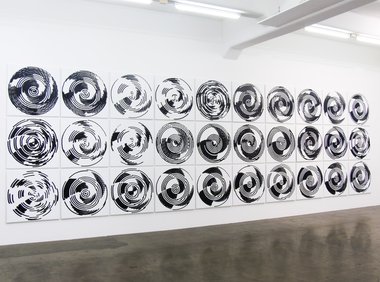


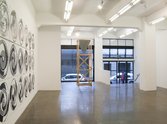
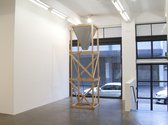
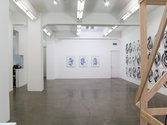


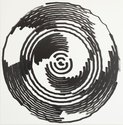
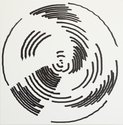
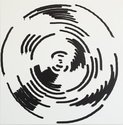
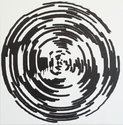
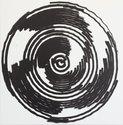
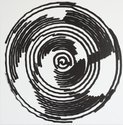
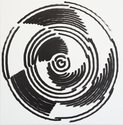
 Advertising in this column
Advertising in this column Two Rooms presents a program of residencies and projects
Two Rooms presents a program of residencies and projects



This Discussion has 0 comments.
Comment
Participate
Register to Participate.
Sign in
Sign in to an existing account.